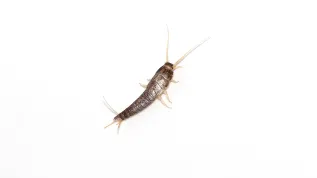
Larvae and adult damselflies can feel the effects of stress experienced as eggs, and exposure to one stressor can protect the animals from the effects of subsequent stress, says new research from an international team of scientists.
The results were published in the journal Evolutionary Applications.
“Exposure to one type of stressor can influence how the animal's response to subsequent adverse conditions. Interestingly, a combination of several stressors sometimes has a more beneficial effect than a single stressor,” the researchers write.
The team, led by Szymon Śniegula, PhD, from the Institute of Nature Conservation of the Polish Academy of Sciences, investigated the Emerald damselfly (Lestes sponsa), a common species in Poland with a complex life cycle.
The insects overwinter as eggs in water, develop as aquatic larvae, and metamorphose into flying adults living on land. The study examined the effects of stress at different life stages.
In laboratory experiments, three types of stressors were used: decreasing daylight to simulate late-season hatching, chemical signals from an invasive predator (the spinycheek crayfish), and environmental pollutants—specifically copper compounds commonly used in agriculture as herbicides and fungicides.
Predator stress was applied at the egg stage, before hatching. The larvae were then exposed to various combinations of stressors, and researchers measured survival, growth rate, behaviour, and physiological parameters.
The results show that the effects of stress are complex and often depend on sex, life stage, and a combination of environmental factors. For example, predator exposure during egg development delayed hatching and slowed larval growth in males.
Copper exposure increased oxidative stress, but only when larvae had longer development periods. When an additional stressor, such as shortened daylight, occurred alongside copper, the larvae became resistant to its harmful effects.
Other combinations affected behaviour and energy use, with some individuals increasing activity while others suppressed it.
“This was the most complex experiment I have conducted in my laboratory,” said Śniegula. “Thanks to it, we have come closer to understanding how animals cope with environmental challenges in the age of climate change, invasive alien species, and pollution.”
He added: “These findings highlight the fact that standard laboratory experiments examining the impact of individual threats—such as pollution—in isolation from other variables may not reflect the actual threat to organisms in nature.
“These results demonstrate that to realistically assess the impact of pesticides on the functioning of various organisms, various parameters of natural stressors must be taken into account; the way that an animal responds to the presence of harmful substances in nature is also influenced by factors such as the season and the presence of predators,” the researchers note.
The research was conducted under an OPUS grant awarded by the Polish National Science Centre.
PAP - Science in Poland
lt/ zan/
tr. RL













